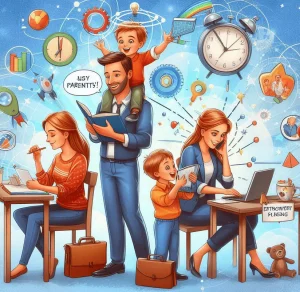I was asked an interesting educational question recently about motivation and pedagogy: to wit, what pedagogy is used to create classroom strategies that each motivator prefers?
Pedagogy is a word that one doesn’t encounter as frequently as one did, say, in the Seventies; what does it mean? Pedagogy is the science of teaching, of instruction, of training. It answers the question of how people learn effectively. Just preaching to people may make the preacher feel good, but will the audience learn anything? An exceptional preacher, possibly, may well impart knowledge and information, even rouse people to take action; but in the real world if every teacher in the classroom used ‘preaching’ as their dominant pedagogy, there would be even more disaffected and bored youngsters than there are now.
To teach – or train – effectively we must understand how people learn effectively. This understanding then informs the way and ways we present, communicate and offer information, knowledge, concepts, ideas and even practical skills.
There is a definite correlation between Maslow’s Hierarchy of Needs and motivation itself; further, the nine motivators – as defined by Pink in his book Drive, and by others in their work – are themselves grouped into three categories of three: some motivators, those relating to control, wealth and expertise, are predominantly about thinking. And this is obvious (if you think about it!): exercising control, creating wealth and developing expertise all have in common a planning element to them. They are the typical motivators of high achievers in the work place; they are also, to use NLP terminology, synonymous with the ‘visual’ – the what-you-see-is-what-you-get, with plans that are logical, coherent and highly visible.
By contrast, three other motivators are highly geared to feeling. These reflect the needs for security, belonging and recognition. Security is something that fundamentally we can only achieve through relationships; belonging is equally about relationships with others; and recognition can only come from others – and from positive relationships with them, usually. Relationships, then, are less about the NLP ‘visual’, and more about the NLP ‘auditory’; for it is in listening to others that the strongest relationships are built.
Finally, three motivators are related to knowing, which is intuitive and direct, rather than being logical and considered like thinking. These motivators are creativity, freedom and meaning. These motivators are at the peak of Maslow’s Hierarchy – they are self-actualisation motivators. And they are very direct. To take one example, creativity: everyone knows, or should know, that one doesn’t think one’s way to being creative, although much thought may precede the ‘creative’ moment. The universal testimony about creativity is that it comes in a flash – in poetry it is called the ‘muse’ – and immediately solves complex problems and produces outstanding works of art. It is instant, and invariably the creative, him or herself, knows they have been a conduit for inspiration. In NLP terms, then, this knowing corresponds with the ‘kinaesthetic’, because the creative moment goes through the body – it is felt, although that is not the same as being a specific feeling.
It should be clear from the foregoing that the pedagogy that motivation needs to use to create effective classroom strategies is NLP or the three modes of perception called Think-Feel-Know (TFK), and these two correspond. To take the latter, then, what are its characteristics?
Think-orientated people prefer detail, data, statistics, evidence, proof, references and generally lots of information. In complete contrast to this feel-orientated people like stories, examples, pictures, anecdotes, metaphors, analogies, graphs, diagrams and more generally and literally getting the picture! Finally, the know-orientated people like plain, simple facts – get to the executive summary as quickly as possible.
Each of us has all three modes of perception, but we tend to be dominant in one, and have a secondary backup. Thus classroom strategies need to reflect on how a balance of all three can be achieved; and better still, if the classroom and individuals can be profiled, then to weight the balance towards the dominant one or two tendencies. This is even more critical where special needs are involved.
And a curious thing also arises. It could be that the profile is done through a Think-Feel-Know or NLP test to establish which modes are dominant in any given student. But it can also be reversed engineered: namely, a motivational profile of the individual or class, based on the nine categories of motivation, and the three triads I mentioned, would give the teacher a clear idea of which of Think-Feel-Know modes of perception were most likely to be effective.
It can hardly be emphasised enough that an appropriate pedagogy for classroom strategies is essential, and equally, if don’t want to think about in that pedagogic way, presenting learning in a way that motivates students is core. Let’s learn, then, more about motivation.






More Stories
One Quote From Each Professor That Perfectly Sums Up Their Personality
New ED-Commissioned Study on ESEA Provisions that Protect Students
Lisa Nielsen: The Innovative Educator: 5 Pandemic Learning Gains